By Dan Weisz
One of the hummingbird species that we have in the Foothills is the Costa’s Hummingbird and I have several Costa’s who make their home around my house. They are here year-round and the males are known for their striking purple gorgets. As a reminder, here are a few past photos that I have shared with you. These are handsome hummingbirds.
Here is one of my old photos of a Costa’s Hummingbird. This male is puffed up due to the cold of a winter’s morning:
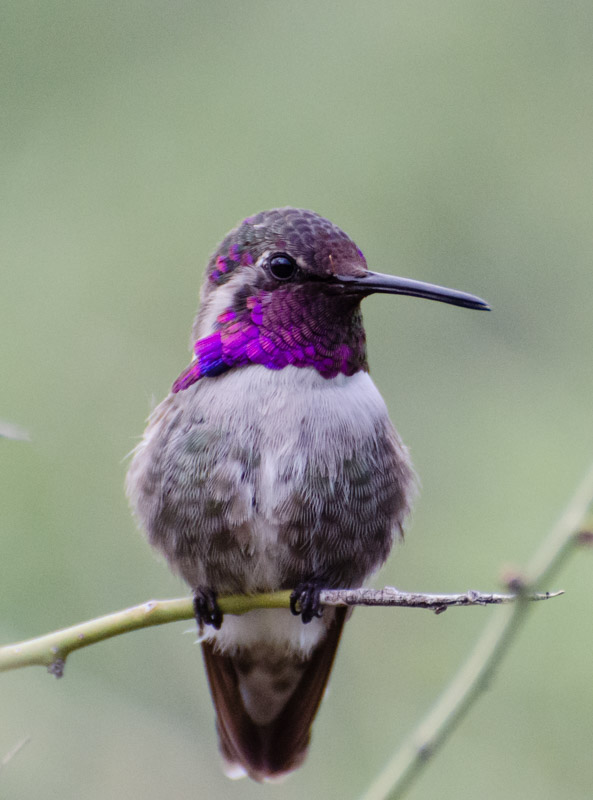
Several summer’s ago this Costa’s was cleaning its bill on a dried twig. You can see how long his gorget feathers are on the side.
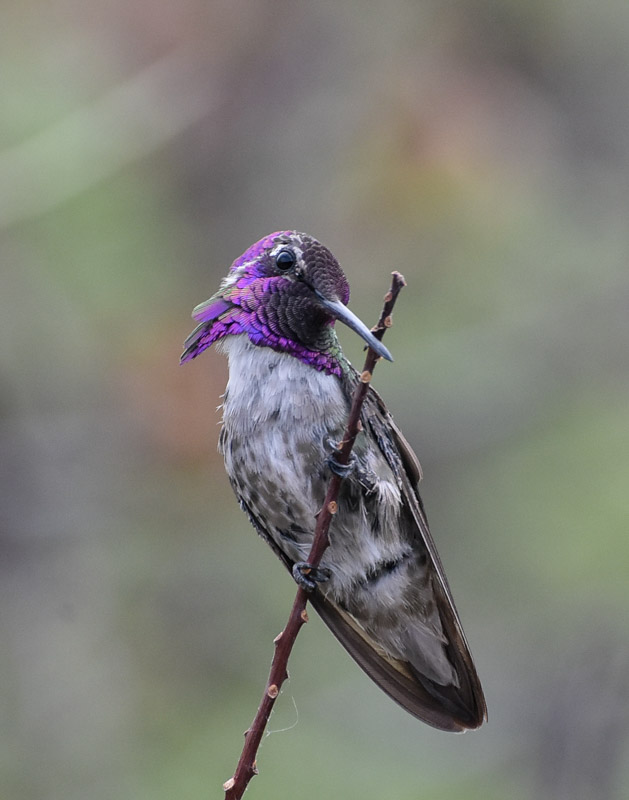
In July, this Costa’s was sitting in my front yard, his full gorget aglow. That’s what a typical male Costa’s Hummingbird looks like:
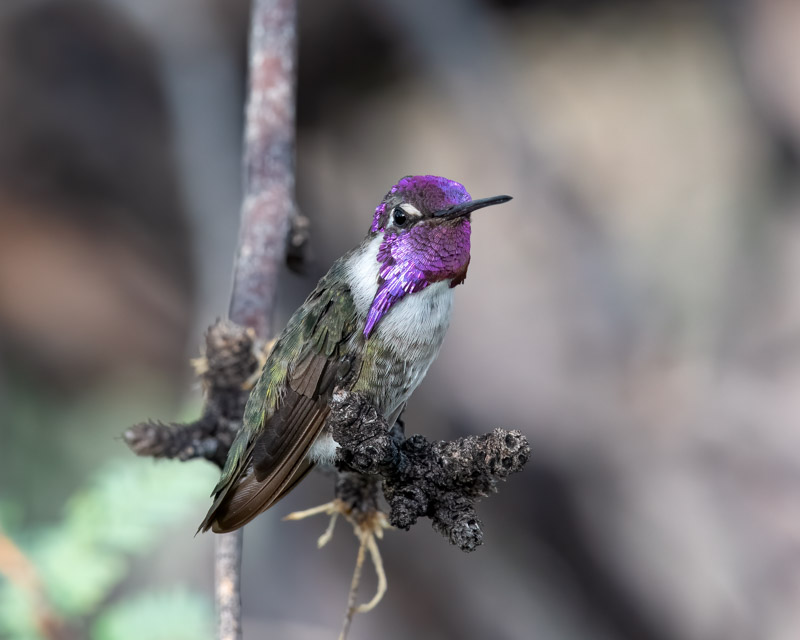
A few days ago I was watering plants in the backyard and saw one Costa’s Hummingbird flying around. When it landed on a nearby twig, my jaw dropped. It looked like the hummingbird had white whiskers instead of a purple gorget. I dropped the hose, ran inside to grab my camera. The hummingbird was gone but I counted on a typical hummingbird’s behavior of returning to favored perches. Sure enough, within five minutes the hummingbird returned and I got a very good look at it. While there are some purple feathers on his head and neck, look at all of those white feathers.
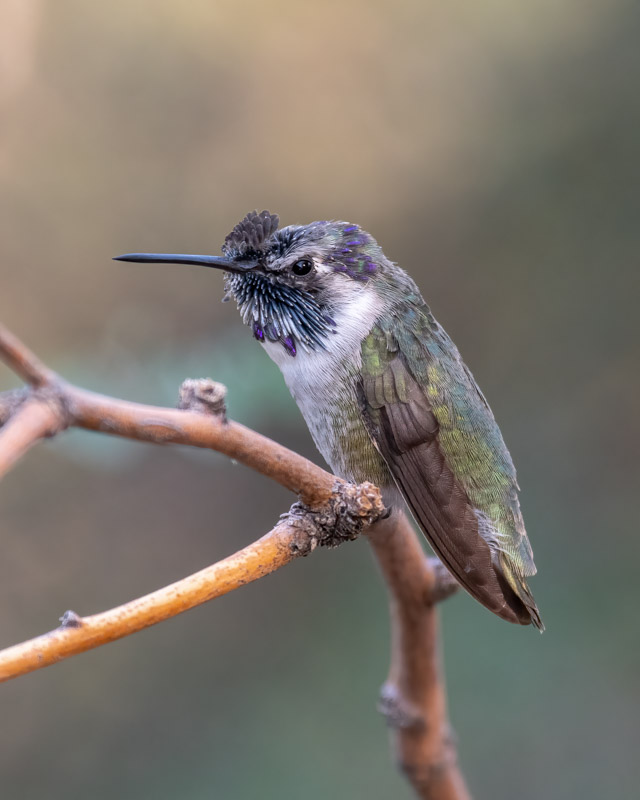
Here is a close-up of the photo above. What we are seeing are new feathers. The bird molts all of its feathers annually and the gorget feathers are the last to molt on a Costa’s. When a new feather grows in, it is covered in keratin which will quickly wear off, allowing the feather barbs to unfold. In these hummingbirds, the gorget feathers can be replaced over the matter of just a few days as the new pin feathers push the old feathers out of their follicles almost simultaneously. Rapid replacement ensures that these feathers are uniformly fresh and shiny as the breeding season begins. It takes a lot of grooming to free the new feathers from their sheaths. This Costa’s Hummingbird is still sporting some of last year’s feathers on the crown of his head so he’s not quite done molting yet.
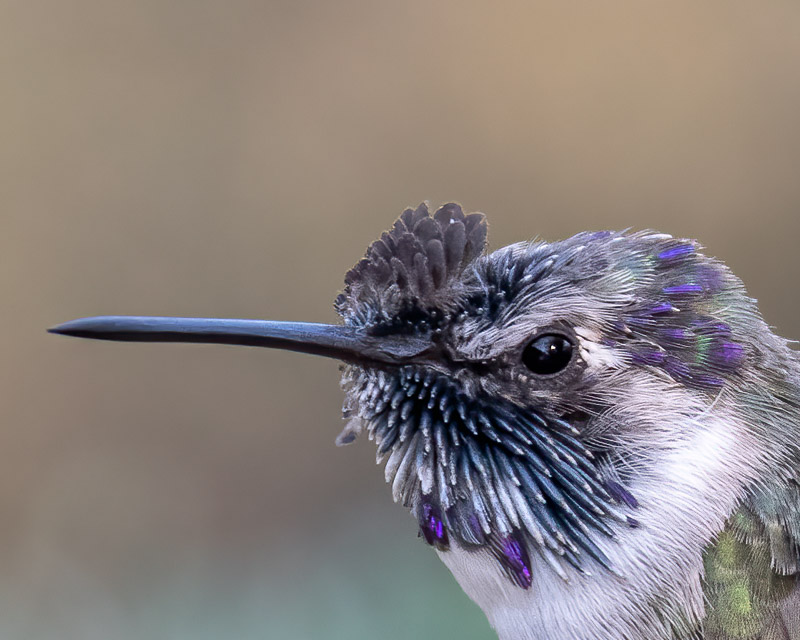
So rather than seeing a grumpy old man, I saw a handsome young man growing into his fancy breeding plumage. I just happened to catch him on one of his few “in-between” days before his new feathers opened up and showed their wonderful brilliant purple color. (Special thanks for Sherri Williamson, Elissa Fazio, Steve Vaughan and Laura Davis and Douglas Everett for sharing their knowledge with me on this subject). Sherri said that this bird is at least 17 months old. The full feathers sticking up atop his head are adult feathers and are worn, which means this is at least his second year of molting.
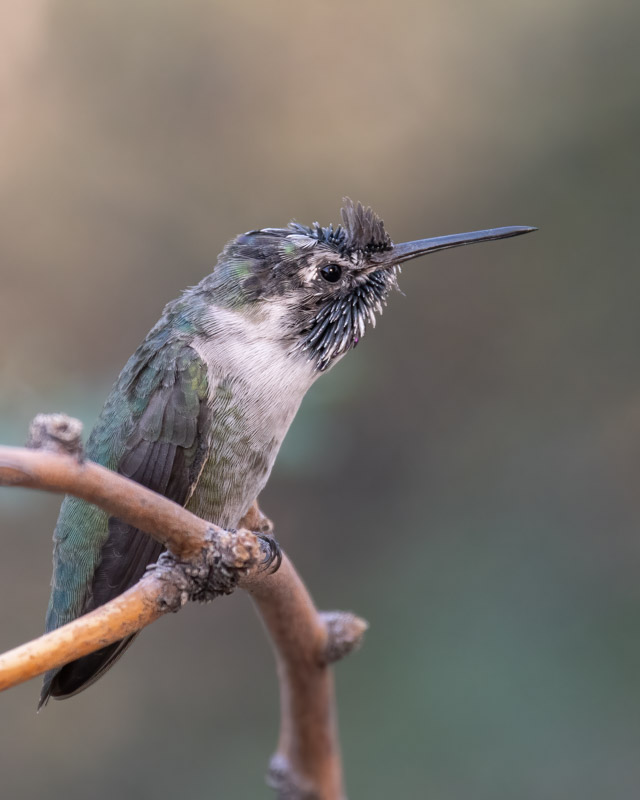
I don’t think I’ll ever forget how this bird looked.
And then the other morning, six days later, I saw the same hummingbird again and he looked a bit different! I ran for my camera again, waited for the bird’s return which took about 15 minutes, and then was rewarded when the bird did return. Here is what I found: There are fewer pin feathers on his throat, there are longer purple gorget feathers on his throat, and the fluff of old adult feathers on his head have almost all fallen out.
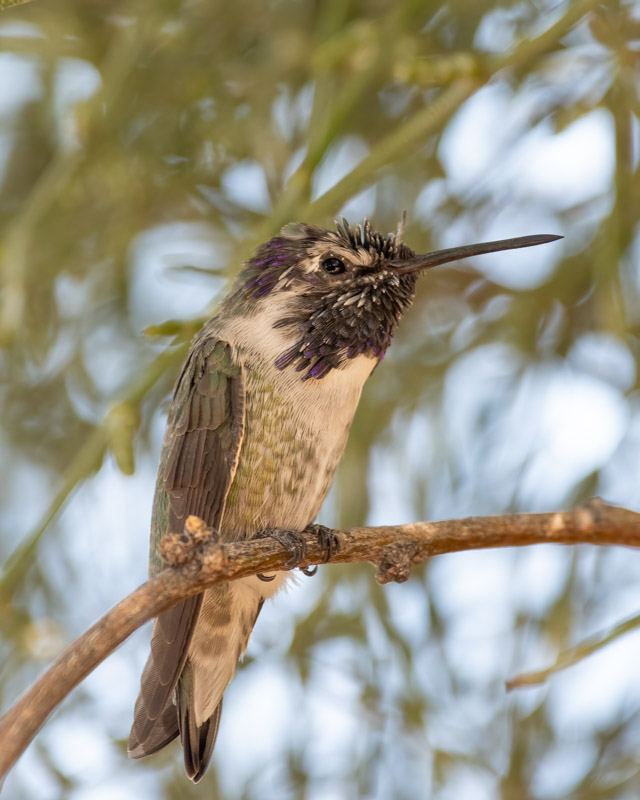
He moved from perch to perch under a thick canopy of mesquite leaves. I was able to find a few openings for some photos. In the shot below, you can really see how his lower gorget feathers have come in. And there is still one old feather atop his head!! I’m sure the new feather is growing in under it and will push the old feather out any day now as has happened to the other crown feathers seen in last week’s shots.
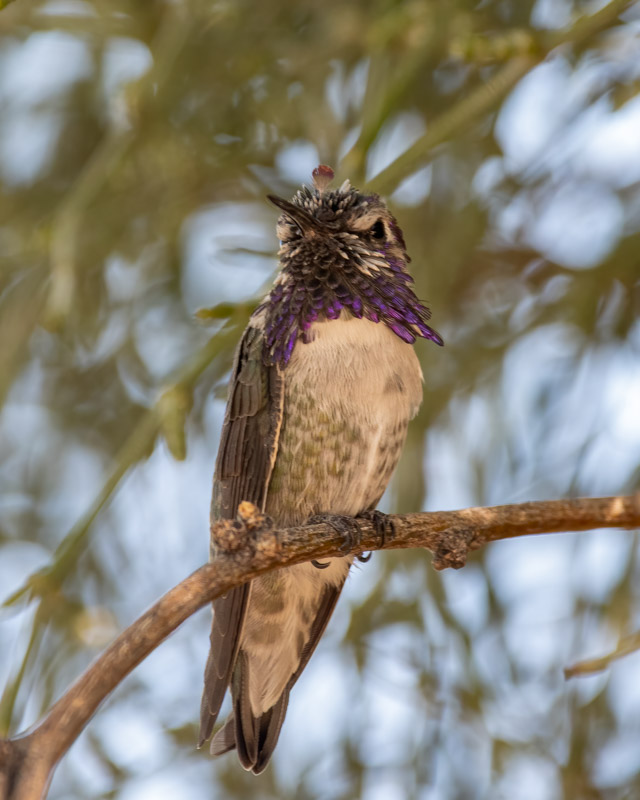
And a close-up… If you compare it to the earlier close-ups from last week, this bird has a very different look now.
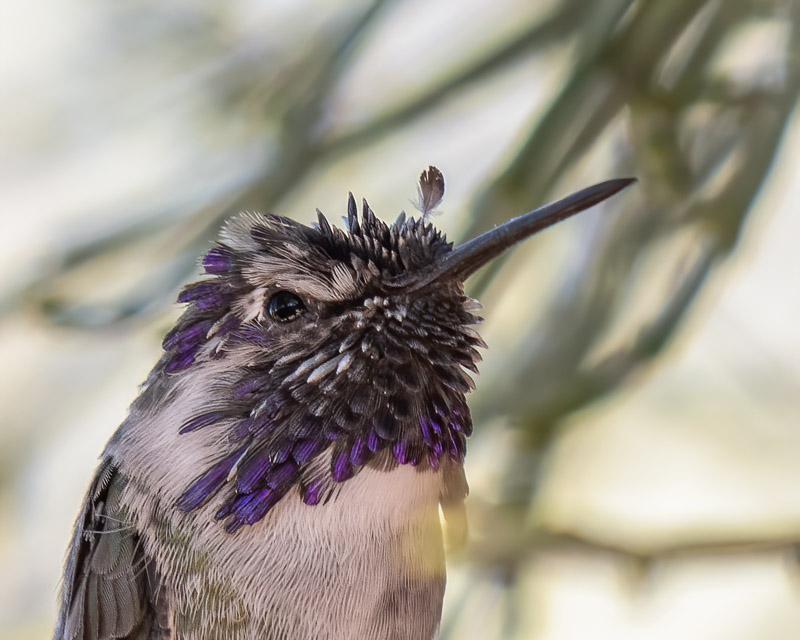
And here is a final shot of the Costa’s Hummingbird. By next week I’ll bet he’ll be wearing a full, new set of feathers and look magnificent!
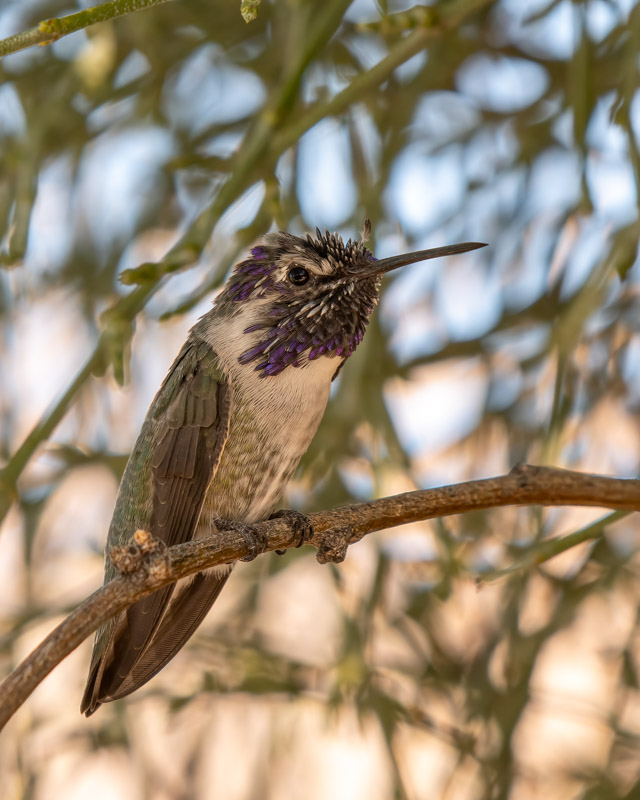
In another few days he will be looking as handsome as ever with a new, brilliant purple gorget.
